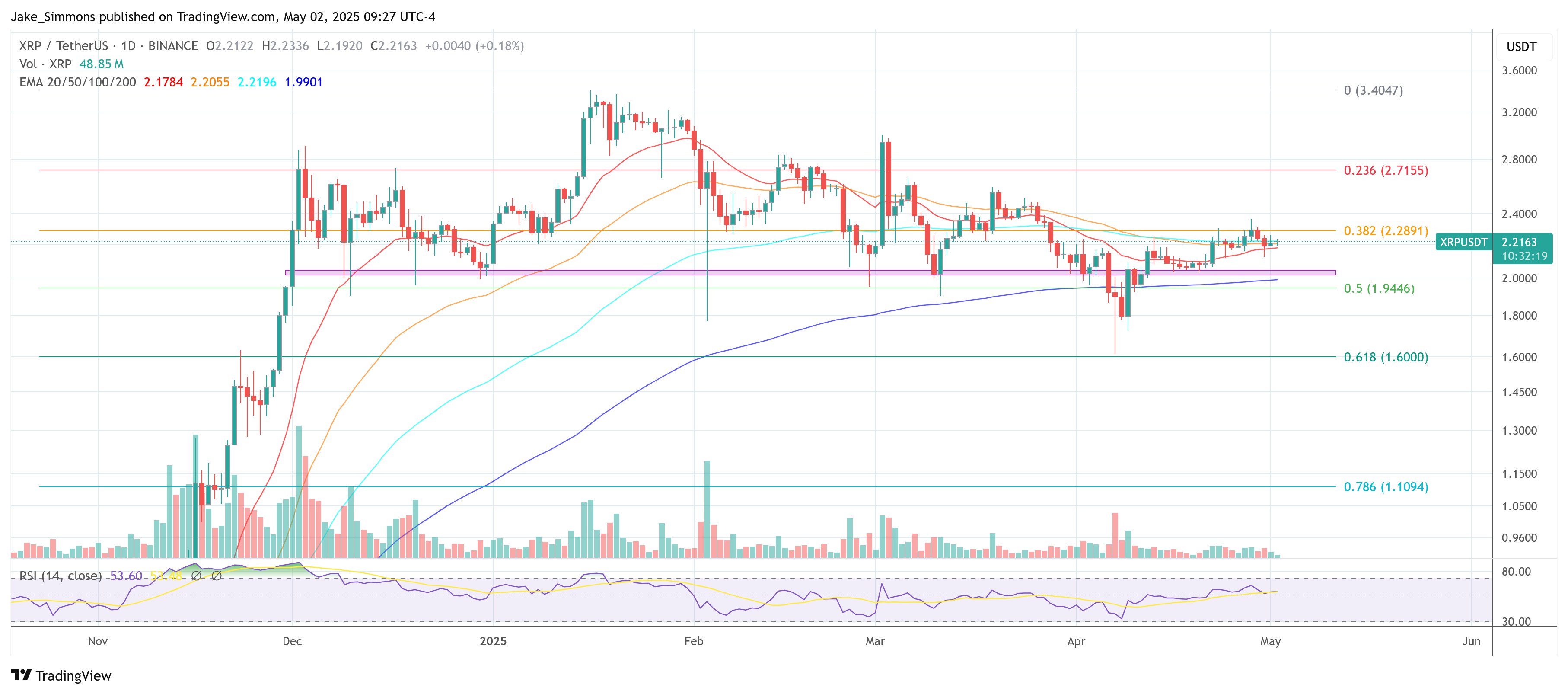Purpose to belief
Strict editorial coverage that focuses on accuracy, relevance, and impartiality
Created by business consultants and meticulously reviewed
The very best requirements in reporting and publishing
Strict editorial coverage that focuses on accuracy, relevance, and impartiality
Morbi pretium leo et nisl aliquam mollis. Quisque arcu lorem, ultricies quis pellentesque nec, ullamcorper eu odio.
In a video launched on Thursday, crypto commentator Zach Rector dismantled a viral claim—popularized by influencer Jake Clover—that XRP tokens are secretly altering fingers for $100,000 apiece inside clandestine “darkish swimming pools.” Rector’s rebuttal goals to calm newcomers spooked by the rumor and to re-center the dialogue on verifiable market mechanics relatively than conspiratorial price-suppression narratives.
XRP OTC Offers Aren’t Market Manipulation
Rector opens the broadcast by calling the thesis “a brand new spherical of misinformation and FUD,” stressing that “establishments are [not] going to get XRP at $100,000 on the personal ledger. That’s not taking place.” He explains that what social-media accounts now label “darkish swimming pools” are merely over-the-counter (OTC) desks—personal bilateral venues that enormous holders have used for many years in equities, overseas trade and, extra just lately, digital property.
“It’s nothing new or particular to XRP,” he says, including that Ripple Labs has been off-loading a part of its treasury by way of OTC since 2019 with out miserable the open-market worth. Certainly, XRP has “pumped tremendously since November,” Rector notes, whilst Ripple distributed recent provide to institutional counterparties.
A lot of Clover’s allegation hinges on the concept that a separate, personal model of the XRP Ledger (XRPL) carries its personal worth—orders of magnitude above the general public market’s. Rector calls that notion a elementary misunderstanding of how Ripple’s enterprise tooling works.
Central-bank or authorities pilots typically ask for “personal ledgers the place they’ll maintain messaging and transactions hidden from the general public view,” he acknowledges, however these environments are permissioned sidechains or wrapped derivatives. “XRP solely exists on the general public XRP Ledger that all of us use […]. Your XRP can by no means go away the XRP Ledger,” he states. If testers wished to mannequin a six-figure worth for stress-testing functions, “that’s not the true XRP, by no means was, by no means could be.”
To underscore the purpose, Rector cites Ripple chief know-how officer David Schwartz, who “has already addressed this” and clarified that “there are usually not two costs of XRP.” Rector additionally invokes examples from different enterprise-focused chains—XDC’s hybrid structure and Constellation’s Division of Protection “Metagraph” deployment—to point out that privateness partitions are normal follow, not proof of hidden liquidity at surreal valuations.
OTC Patrons Get A Low cost
Whereas some retail merchants worry that Wall Road would fortunately pay an astronomical premium behind closed doorways, Rector argues the economics are inverted: “Why would an establishment pay $10,000 per XRP on the personal ledger […] when it’s accessible on the general public marketplace for $2?” OTC desks exist exactly in order that whales can accumulate “with out shifting the market,” to not overpay.
The truth is, historical past exhibits that Ripple has typically granted institutional companions a reduction, not a markup—one thing revealed in discovery throughout the SEC vs. Ripple lawsuit. Rector reminds viewers that Ripple’s knowledge set contains “over 1,700 NDAs” and that R3 as soon as negotiated an choice to purchase 5 billion XRP “for a sub-penny” over three years, finally settling for a single billion when the broader partnership soured. None of these figures method the six-figure fantasy.
At press time, XRP traded at $2.21.

Featured picture created with DALL.E, chart from TradingView.com
